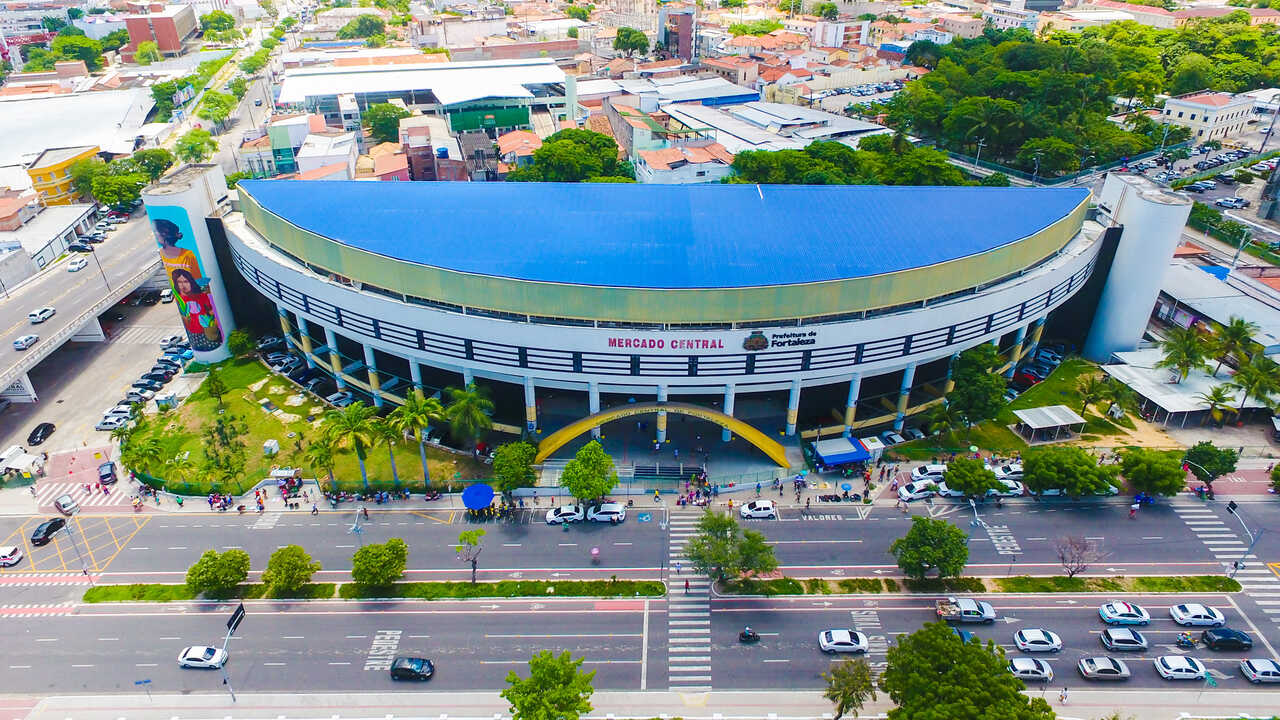Discover Fortaleza
Sun, sea, hospitable people and countless tourist and gastronomic options. It is no coincidence that Fortaleza has become one of the main destinations on the Brazilian coast, attracting visitors from all over the world. The capital of Ceará is a vibrant city with much to discover. It is the starting point for a coast full of beautiful landscapes and iconic sites.
The city’s history began in the 17th century, with the first Portuguese occupation. The region became the scene of a dispute with the Dutch, who, in 1649, established themselves with the construction of the Schoonenborch Fort. The invaders were expelled and the defense installations were renamed Fortaleza de Nossa Senhora da Assunção. This gave rise to the name of the settlement, which became a town in 1726 (it is approaching its three hundredth anniversary) and a city in 1822. Currently, Fortaleza has 2.43 million inhabitants, according to the 2022 IBGE Census.

How to get there
Pinto Martins International Airport (FOR) has connections to the main capitals of the country. It also connects the city to the United States and Europe (Fortaleza is the closest Brazilian capital to the continent).
From the Bus Terminal (Avenida Borges de Melo, 1.630) there are buses to the entire state, the main cities in the Northeast and other regions of the country. Land access is via BRs 116 (which starts in the city and goes to Porto Alegre); 020 (towards Brasília) and 222 (crosses Piauí and Maranhão and ends in Marabá-PA).
Where to stay
Fortaleza has a wide range of hotels and options for all tastes and budgets. The beaches of Iracema/Meireles and Futuro have the largest number of hotels, with sea views as an added attraction. It is also possible to stay in the surrounding cities, such as Aquiraz, where Beach Park is located, and Caucaia (Cumbuco).
What to eat
Fish and seafood are one of the highlights of Ceará’s cuisine – dishes with lobster, crab and shrimp caught in the region are great recommendations for visitors. And there’s no way to truly get to know Fortaleza without trying Baião de Dois, made with rice, string beans and coalho cheese. In addition, couscous and tapioca are present in the breakfast of hotels (and in the daily life of Ceará residents). It’s also worth stocking up on cashew nuts, in the traditional or sweet version, with honey and sesame seeds.
What to do
Beaches

Fortaleza’s coastline offers a variety of activities. It’s worth watching the sunset at Iracema Beach (named after the character in the book of the same name, by José de Alencar) and visiting its craft fair; enjoying the structure of the stalls set up at Praia do Futuro (photo), and taking a raft ride. Urban beaches, which were unsuitable for swimming for a long time, have now become safe for swimming again.
Dragão do Mar Center
Opened in 1999 in an old port area of Iracema, the Dragão do Mar Center for Art and Culture is the most important cultural space in Ceará. Its name pays homage to the raft on which Francisco José do Nascimento led the popular abolitionist movement in the state.

It houses the Ceará Culture Museum, the Ceará Museum of Contemporary Art, the Rubens de Azevedo Planetarium, the Dragão do Mar Theater and the Dragão do Mar Cinema, as well as spaces such as the Leonilson Visual Arts Library, the Sérgio Motta Amphitheater, the Multigaleria, the Auditorium and the Dragão do Mar Arena. The space also has cafés, bookstores and craft shops. The surrounding area has several good restaurant options.
Central Market

“The largest craft market in Brazil”. This is what the Central Market is known as, and not without reason. After all, there are more than 600 stores offering different options of handcrafted products, from embroidery to hammocks, clothing, sculptures and carvings, leather goods, chestnuts and typical sweets.
Iracema Beach Fair
The Handicraft Fair held daily on the seafront at Iracema Beach is also a good option for those looking for regional products and creations.




